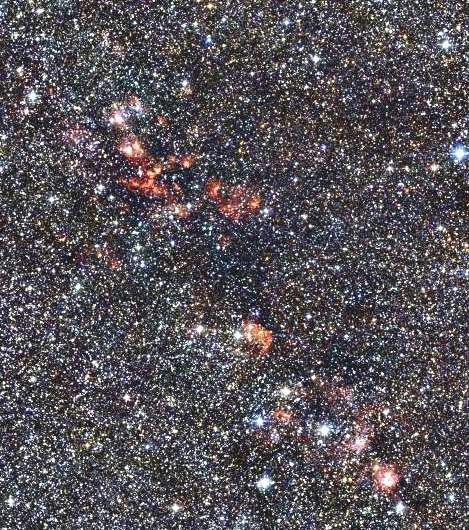The physical properties of dense molecular clouds

Small, dense interstellar clouds of gas and dust, containing hundreds to thousands of solar-masses of material, are suspected of being the precursors to stars and stellar clusters. These so-called cores, with gas densities around one thousand molecules per cubic centimeter (a more typical interstellar value is fewer than one per cubic centimeter) have become a primary focus for understanding the process of high-mass star formation. A series of largescale surveys of the Galactic plane have recently detected tens of thousands of them using infrared and submillimeter telescopes that respond to the emission of their dust; the far infrared sensitive Herschel Space Telescope has been particularly important. A detailed census of these dense molecular cloud structures, their temperatures, masses, and environmental conditions, can help constrain the initial conditions of star formation and subsequent galaxy evolution theories. So far, however, a coherent picture has not emerged, in part because the analyses have been based on individual cases which are often influenced by local effects.
CfA astronomer Cara Battersby and her colleagues now report on the properties of a large sample of dense cores - 1710 objects – that were discovered and/or studied in a survey taken at millimeter wavelengths. The survey covered about one-half of the plane of our Milky Way galaxy looking for these dense clumps. In order to characterize accurately the parameters of each core, its distance needs to be known. Even though they all are seen in the direction of the galactic plane, some could be close to the Sun, and others as far away twenty-five thousand light-years (the distance to the galactic center), or even farther. The team estimated the distance to each object using a statistical likelihood method that included data on the sources' measured velocities.
The astronomers reached a number of important conclusions. First, they discovered that the lower mass cores have randomly-distributed mass values, indicating that their formation is dominated by random processes. In contrast, massive cores (more than about a thousand solar-masses of material) are more likely to form in processes that favor increasingly massive outcomes; the details further constrain these processes. They also report that about five percent of the mass of interstellar gas is found in the dense cores, and that they are distributed very uniformly in the vertical direction of the plane of the galaxy (about one hundred light-years thick) and are not preferentially at the mid-plane.
More information: "The Bolocam Galactic Plane Survey. XIII. Physical Properties and Mass Functions of Dense Molecular Cloud Structures," ApJ 805, 157, 2015. arxiv.org/abs/1504.01388
Provided by Harvard-Smithsonian Center for Astrophysics





















